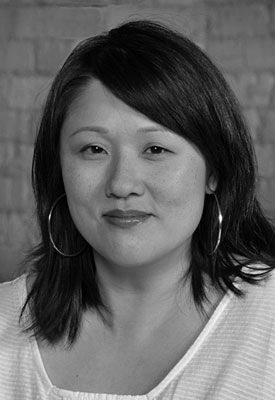Sun Yung Shin on Socially Conscious CW Pedagogy
This is the latest in a series of guest posts on teaching creative writing. I asked poet Sun Yung Shin if she might write something about teaching socially conscious creative writing. She responded with the below. I asked her for an example to add at the end.
As always, if you’re interested in contributing to this series, email me at m [dot] salesses [at gmail etc.].
Sun Yung Shin is the author of multiple books, including Rough, and Savage and Skirt Full of Black (both published by Coffee House Press). Unbearable Splendor, a book of prose, is forthcoming from Coffee House in 2016.
* * *
For me, and many others, writing should be liberatory, and the classroom should be a radical, liberatory place. The fact that Google thinks “liberatory” is misspelled (it’s underlined in red dots) is a good sign that we need liberation and thus, liberatory practices!
So what does that look like? It can mean filtering everything I do with the students and offer the students through multiple, intersecting lenses. A lot of it comes naturally to me because I am on the outside of so many dominant American and Western institutions–as a woman, immigrant, person of color, Korean, adoptee (kinship outlaw)–I have simply not existed in literature in English. I like to think that that helps me not take anything in language or literature for granted–to question everything–and to ask students to do that work with me with everything we encounter.
When analyzing a creative work, I ask students to read the text through the question of, What is this author offering us in this potential encounter? With what are we being confronted? In what ways can we create a fruitful encounter with this text and everything it connotes? How does this text answer the question of beauty? What is distinctive about this text, what does it offer the world?
When creating writing assignments, I try to make them as open-ended as possible while still providing limitations/criteria that I hope will be very generative and hold the potential for deep individuality, idiosyncrasy. Exercises are much more about form than content, and I don’t ask students to necessarily write about personal experiences or what they know.
Craft-wise, when teaching fiction I often speak in terms of cinema (e.g. give the reader a close-up, e.g. make multiple edits/cuts in the scene–use time) and theater (e.g. let’s see this part of the story “on stage” / dramatized). With poetry I want students first to not end-rhyme and to break away from automatic left justification. To see the page as a field of action, energy, and more like a composition of music, a score. (And I learned all this from other writers!)
[For example] when I taught Drift by Caroline Bergvall, I asked the class to contemplate and discuss the ethics of the POV in her section that narrates the course and sufferings of the “left-to-die” migrant vessel, using reports and the words of survivors (link). The ethics of documentary poetics and remixing and sampling and the gaze and who has the right or permission to speak for or about whom, and also what are the differences between journalism and poetry . . . we talked about asymmetrical power and positionality . . . and then the writing assignment inspired by Drift was in part a provocation to incorporate techniques of narrative or “gaze” distance by considering how the continuum or flux of objectivity-subjectivity is embodied in one’s own language.
—Photo: Dan Markworth

